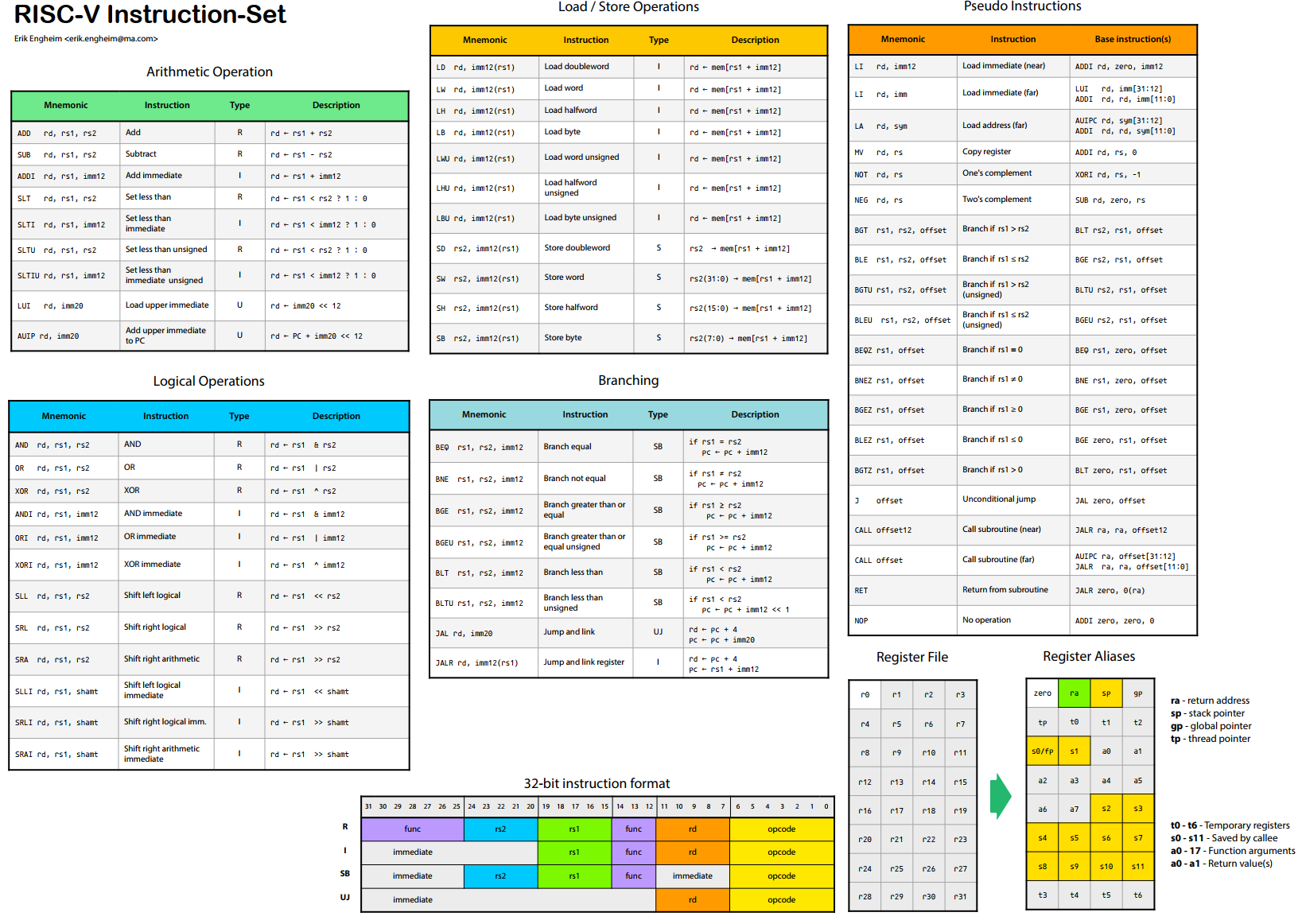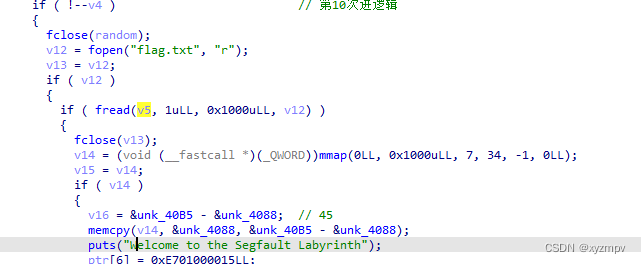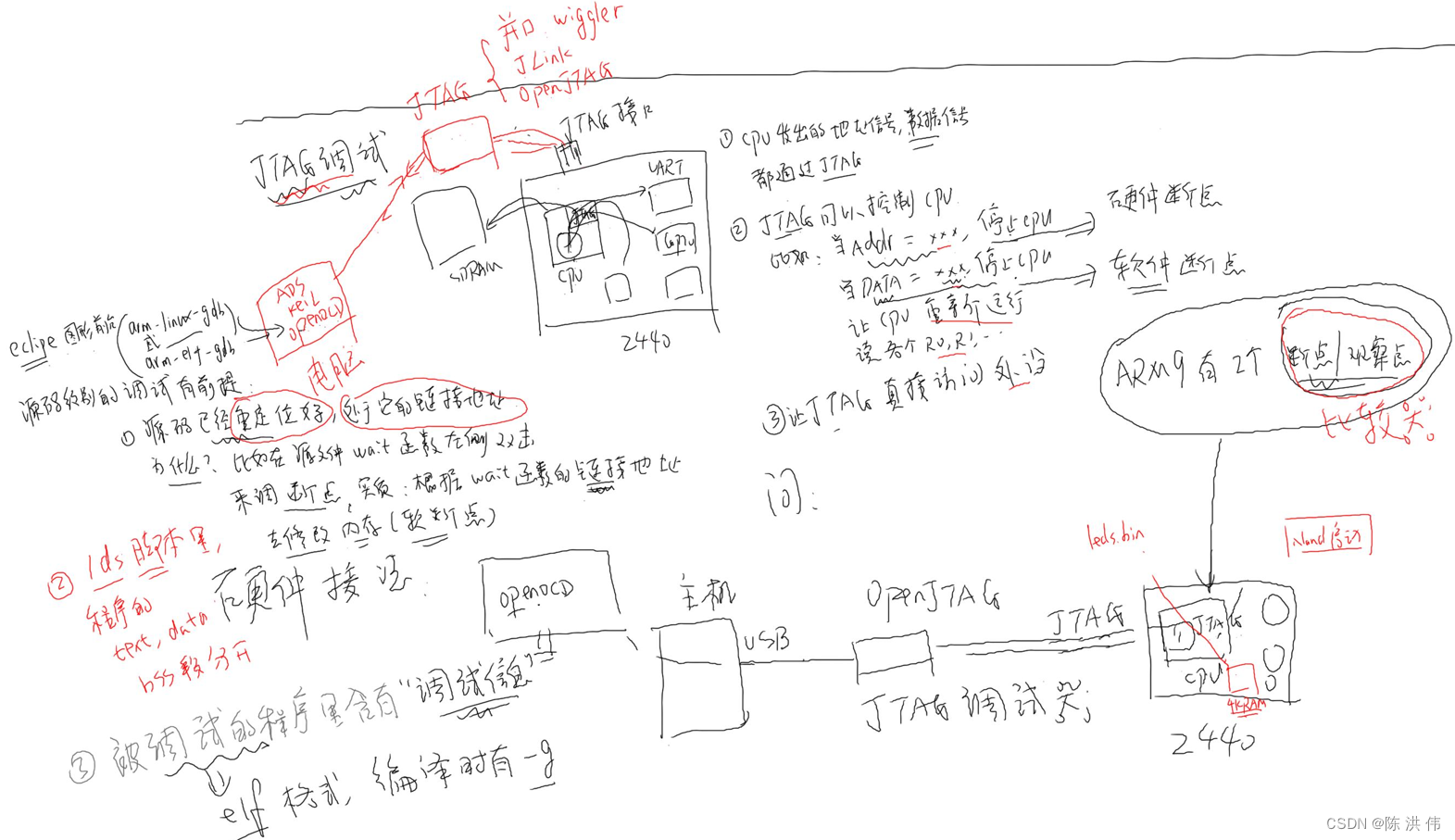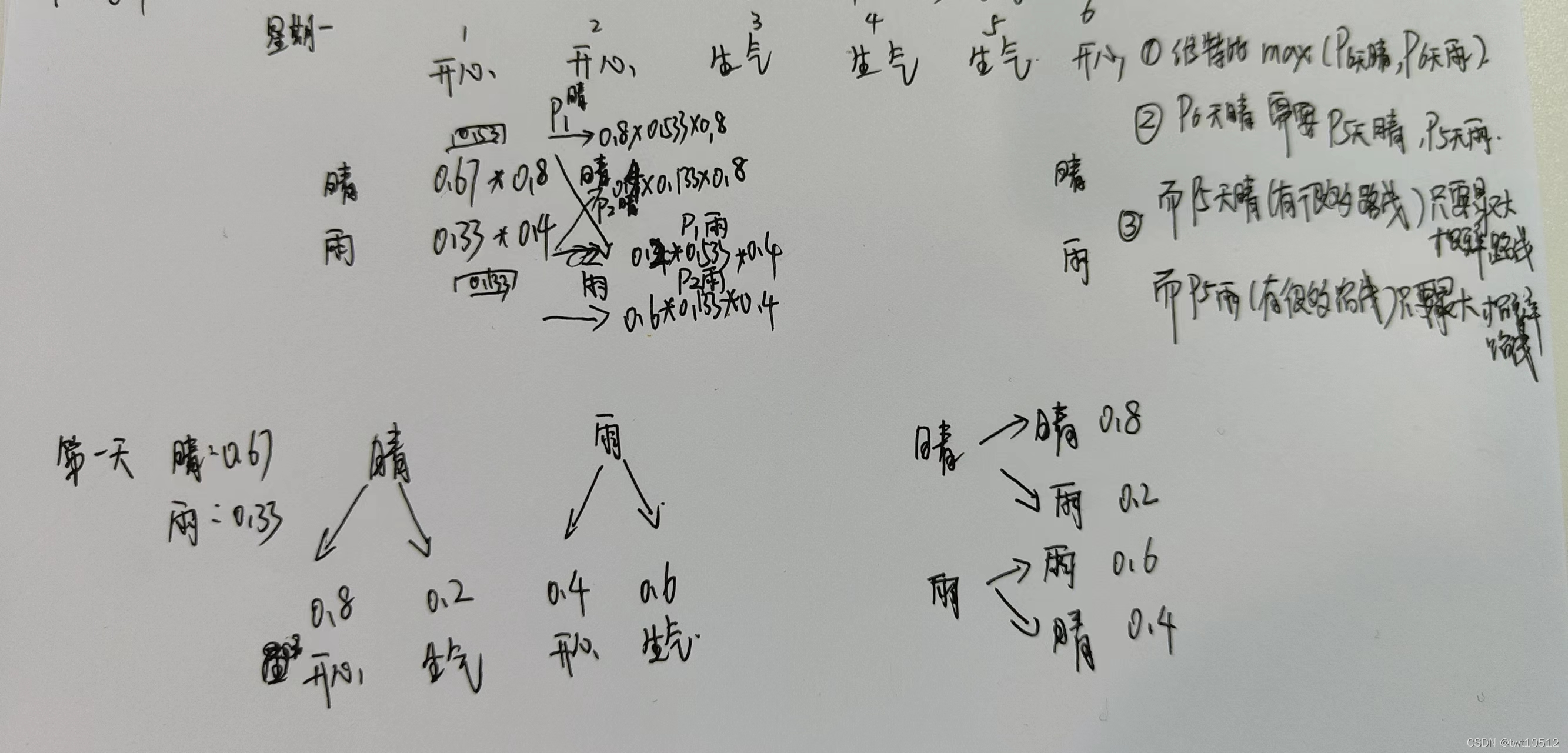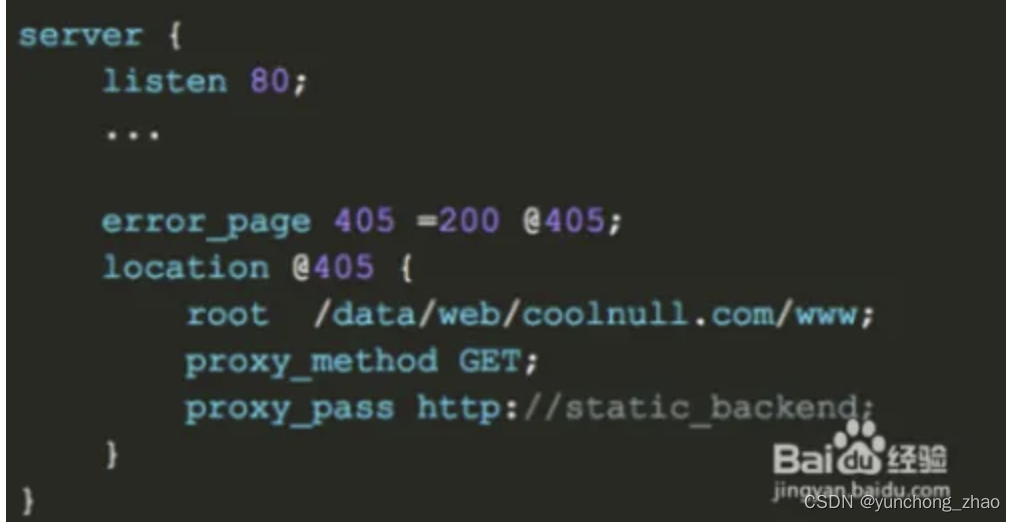当前位置:网站首页>机器学习:随机梯度下降(SGD)与梯度下降(GD)的区别与代码实现。
机器学习:随机梯度下降(SGD)与梯度下降(GD)的区别与代码实现。
2022-07-06 17:34:00 【HanZee】
机器学习:随机梯度下降(SGD)与梯度下降(GD)的区别与代码实现。
如果想细致的了解:-》 梯度下降法
梯度下降法(GD)
假设函数fx, 代价函数cost,有如下表达式:
f ( x ) = w 1 x 1 + w 2 x 2 + b c o s t ( w ) = 1 n ∑ i = 1 n ( f ( x i ) − y i ) w 1 = w 1 o l d − α ∂ c o s t ( w ) ∂ w 1 c o s t ( w ) w 2 = w 2 o l d − α ∂ c o s t ( w ) ∂ w 2 c o s t ( w ) \begin{aligned}f\left( x\right) =w_{1}x_{1}+w_{2}x_{2}+b\\ cost\left( w\right) =\dfrac{1}{n}\sum ^{n}_{i=1}\left( f(x_{i}\right) -y_{i}) \\ w_{1}=w_{1old}-\alpha \dfrac{\partial cos t\left( w\right) }{\partial w_{1}}cos t\left( w\right) \\ w _{2}=w_{2old}-\alpha \dfrac{\partial cos t\left( w\right) }{\partial w_{2}}cos t\left( w\right) \end{aligned} f(x)=w1x1+w2x2+bcost(w)=n1i=1∑n(f(xi)−yi)w1=w1old−α∂w1∂cost(w)cost(w)w2=w2old−α∂w2∂cost(w)cost(w)
从上面公式,我们得出如下结论:
1.参数w,b每更新一次,就需要计算一次全体数据对相应参数的偏导数,这个计算量是很大的,函数的收敛速度会在数据量很大的时候会很慢。
2.与SGD不同,每一次参数的改变,都能保证cost是朝着全局最小方向移动的。
3.如果cost非凸函数,函数可能会陷入局部最优。
随即梯度下降(SGD)
公式如下:
f ( x ) = w 1 x 1 + w 2 x 2 + b f\left( x\right) =w_{1}x_{1}+w_{2}x_{2}+b f(x)=w1x1+w2x2+b
f o r ( i = 0 , i < = n , i + + ) c o s t ( w ) = ( f ( x i ) − y i ) w 1 = w 1 o l d − α ∂ c o s t ( w ) ∂ w 1 c o s t ( w ) w 2 = w 2 o l d − α ∂ c o s t ( w ) ∂ w 2 c o s t ( w ) for (i=0,i<=n,i++)\\ cost\left( w\right) =(f(x_i)-y_i)\\ w_{1}=w_{1old}-\alpha \dfrac{\partial cos t\left( w\right) }{\partial w_{1}}cos t\left( w\right) \\ w _{2}=w_{2old}-\alpha \dfrac{\partial cos t\left( w\right) }{\partial w_{2}}cos t\left( w\right) for(i=0,i<=n,i++)cost(w)=(f(xi)−yi)w1=w1old−α∂w1∂cost(w)cost(w)w2=w2old−α∂w2∂cost(w)cost(w)
从上面公式,得出如下结论:
- SGD中每更新一次参数,只计算了1个batch的梯度(上面公式假设batch=1),大大加快了函数的收敛速度。
2.SGD每一次更新参数只考虑了一个数据,可能不会每一次都是朝着全局最优的方向移动,最终可能无法收敛到最小,但是会解决陷入局部最优的问题。
代码实现
以波士顿房价预测为案例
导入数据
import numpy as np
path = 'Desktop/波士顿房价/trian.csv'
data = np.loadtxt(path, delimiter = ",", skiprows=1)
data.shape
分割数据
train = data[:int(data.shape[0]*0.8)]
test = data[int(data.shape[0]*0.8):]
print(train.shape, test.shape)
train_x = train[:,:-1]
train_y = train[:,13:]
test_x = test[:,:-1]
test_y = test[:,13:]
print(train_x.shape, train_y.shape)
class Network:
def __init__(self, num_weights):
self.num_weights = num_weights
self.w = np.random.rand(num_weights, 1)
self.b = 0
def forward(self, x):
z = np.dot(x, self.w) + self.b
return z
def loss(self, z, y):
cost = (z-y)*(z-y)
cost = np.mean(cost)
return cost
def gradient(self, z, y):
w = (z-y)*train_x
w = np.mean(w, axis=0)
w = np.array(w).reshape([13, 1])
b = z-y
b = np.mean(b)
return w, b
def update(self, gradient_w, gradient_b, eta):
self.w = self.w - eta*gradient_w
self.b = self.b - eta*gradient_b
#梯度下降
def train_GD(self, items, eta):
for i in range(items):
z = self.forward(train_x)
loss = self.loss(z, train_y)
gradient_w, gradient_b = self.gradient(z, train_y)
self.update(gradient_w, gradient_b, eta)
# if i % 100 == 0:
test_loss = self.test()
print('item:', i, 'loss:', loss, 'test_loss:', test_loss)
#随即梯度下降
def train_SGD(self, num_epochs, batchsize, eta):
for epoch_id in range(num_epochs):
np.random.shuffle(train)
losses = []
for i in range(0, len(train), batchsize):
# print(i, batchsize+i)
mini_batchs = train[i:i + batchsize]
for iter_id, mini_batch in enumerate(mini_batchs):
# print(mini_batch)
x = mini_batch[:-1]
y = mini_batch[-1]
z = self.forward(x)
loss = self.loss(z, y)
gradient_w, gradient_b = self.gradient(z, y)
self.update(gradient_w, gradient_b, eta)
losses.append(loss)
sum = 0
for i in losses:
sum += i
loss_mean = sum/len(losses)
print('Epoch{}, loss{}, loss_mean{}'.format(epoch_id, loss, loss_mean))
def test(self):
z = self.forward(test_x)
loss = self.loss(z, test_y)
return loss
net = Network(13)
net.train_GD(100, eta=1e-9)
net.train_SGD(100, 5, 1e-9)
边栏推荐
- Dell Notebook Periodic Flash Screen Fault
- In rails, when the resource creation operation fails and render: new is called, why must the URL be changed to the index URL of the resource?
- Openjudge noi 1.7 08: character substitution
- Implementation principle of waitgroup in golang
- ESP Arduino (IV) PWM waveform control output
- Let's see through the network i/o model from beginning to end
- 接收用户输入,身高BMI体重指数检测小业务入门案例
- 自旋与sleep的区别
- Metauniverse urban legend 02: metaphor of the number one player
- [batch dos-cmd command - summary and summary] - jump, cycle, condition commands (goto, errorlevel, if, for [read, segment, extract string]), CMD command error summary, CMD error
猜你喜欢
随机推荐
UI control telerik UI for WinForms new theme - vs2022 heuristic theme
Mongodb client operation (mongorepository)
Niuke cold training camp 6B (Freund has no green name level)
Dynamic planning idea "from getting started to giving up"
Wood extraction in Halcon
Atomic in golang and CAS operations
微信公众号发送模板消息
Part V: STM32 system timer and general timer programming
NEON优化:关于交叉存取与反向交叉存取
【JVM调优实战100例】05——方法区调优实战(下)
2022 Google CTF segfault Labyrinth WP
table表格设置圆角
Pytorch中torch和torchvision的安装
Dell笔记本周期性闪屏故障
boot - prometheus-push gateway 使用
[batch dos-cmd command - summary and summary] - jump, cycle, condition commands (goto, errorlevel, if, for [read, segment, extract string]), CMD command error summary, CMD error
Neon Optimization: an optimization case of log10 function
Come on, don't spread it out. Fashion cloud secretly takes you to collect "cloud" wool, and then secretly builds a personal website to be the king of scrolls, hehe
Informatics Orsay Ibn YBT 1172: find the factorial of n within 10000 | 1.6 14: find the factorial of n within 10000
Do you understand this patch of the interface control devaxpress WinForms skin editor?


